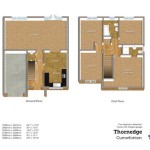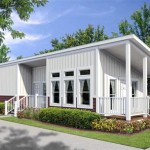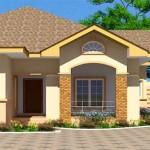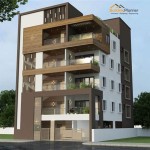Sketching the Foundation: An In-Depth Look at Floor Plan Design
Floor plan design is the foundational element of any architectural project, representing a scaled diagram of a building's layout as viewed from above. It visualizes the spatial relationships between rooms, walls, doors, windows, and other physical features. Creating a well-designed floor plan is crucial for efficient use of space, functional flow, and overall livability. A sketch floor plan design, often the initial stage in the floor plan creation process, is a preliminary drawing used to explore different layout possibilities and to define the overall concept of the building's structure. This article will explore the importance of sketch floor plan design, the key considerations involved, and the process of translating a rough sketch into a detailed architectural blueprint.
The process of floor plan design, particularly in its initial sketching phase, involves a careful balancing act between practical requirements, aesthetic considerations, and the specific needs of the occupants. This initial sketch serves as a communication tool between the architect or designer and the client, allowing for the exploration of various options and the identification of potential problems before committing to a more detailed and costly design phase. It's a fluid and iterative process, often involving numerous revisions and adjustments as the design evolves.
Understanding the Importance of Sketch Floor Plans
Sketch floor plans hold significant value in architecture and interior design for several reasons. Primarily, they provide a visual representation of the intended space, enabling stakeholders to understand the project's scope and layout. This preliminary visualization helps identify potential issues early on, such as inefficient traffic flow, inadequate room sizes, or conflicts between different functional areas. These early identifications can lead to design adjustments that are far less costly and disruptive than making changes later in the construction process.
Furthermore, sketch floor plans facilitate effective communication between architects, clients, and other stakeholders involved in the project. By presenting ideas visually, sketch floor plans ensure that everyone is on the same page regarding the design intent and the project's objectives. This shared understanding can streamline the design process, reduce misunderstandings, and ultimately lead to a more successful outcome. Sketching also encourages creativity and the exploration of different design solutions. The freedom to experiment with various layouts without the constraints of precise measurements and detailed drawings allows for a more innovative and tailored design that meets the specific needs and preferences of the client.
Finally, a well-executed sketch floor plan serves as a solid foundation for the subsequent stages of architectural design. It provides a clear roadmap for the development of detailed blueprints, elevation drawings, and 3D models. This initial sketch ensures that the essential elements of the design are well-defined and that the overall layout is structurally sound and functionally efficient.
Key Considerations in Sketch Floor Plan Design
Several core principles and requirements must be taken into account when creating a sketch floor plan. These considerations guide the design process and ensure that the final product is both aesthetically pleasing and functionally sound. One of the primary considerations is determining the functional requirements of the space. This involves understanding the intended use of each room and how these functions interact with one another. For example, a kitchen design should consider the workflow between the refrigerator, sink, and stove, while a living room layout should accommodate seating arrangements, entertainment systems, and traffic flow.
Circulation is another crucial element. The arrangement of rooms and hallways should facilitate easy and efficient movement throughout the building. Hallways should be wide enough to accommodate traffic and should connect different functional areas seamlessly. Avoiding dead ends and creating clear pathways can enhance the overall usability of the space. Moreover, the size and proportion of each room are essential to the overall design. Rooms should be appropriately sized for their intended use, and their proportions should be visually balanced. A long, narrow room, for example, might feel cramped and uncomfortable, while a square room might feel more spacious and inviting.
Natural light and ventilation are significant factors that can significantly impact the comfort and livability of a space. The placement of windows should maximize natural light exposure while also providing adequate ventilation. Consider the orientation of the building and the potential for solar gain to minimize energy consumption. Furthermore, privacy is a key consideration, especially in residential designs. Bedrooms and bathrooms should be located away from high-traffic areas to ensure privacy and tranquility. The placement of windows and doors should also be carefully considered to prevent unwanted views into private spaces.
Compliance with building codes and regulations is a fundamental aspect of floor plan design. Local zoning ordinances, building codes, and accessibility requirements must be considered from the earliest stages of the design process. These regulations may dictate minimum room sizes, fire safety requirements, and accessibility standards for people with disabilities. Ignoring these regulations can lead to costly delays and revisions later in the project.
The Process of Sketching a Floor Plan
The process of creating a sketch floor plan typically involves several iterative steps, starting with gathering information and developing a preliminary concept. The initial step is to collect project requirements, including the client's needs, preferences, and budget constraints. This may involve conducting interviews, reviewing existing architectural plans for the site, and analyzing the site's topography and environmental conditions.
Developing a bubble diagram is a common technique used in the early stages of sketch floor plan design. A bubble diagram is a simplified representation of the building's layout, with circles or "bubbles" representing different rooms or functional areas. The size and placement of the bubbles indicate the relative size and location of each space, and lines connecting the bubbles represent the relationships between them. This technique helps to explore different layout possibilities and to define the overall organizational structure of the building.
Once a basic concept is established, the next step is to translate the bubble diagram into a more detailed sketch floor plan. This involves drawing the walls, doors, windows, and other physical features of the building to approximate scale. It is important to consider the dimensions of furniture and appliances when determining the size of rooms and the placement of fixtures. At this stage, it is also helpful to sketch the location of electrical outlets, plumbing fixtures, and other essential utilities.
Refining the sketch floor plan involves making adjustments and revisions based on feedback from the client and other stakeholders. This may involve changing the size or location of rooms, adjusting the traffic flow between different areas, or modifying the overall layout of the building. It is important to remain flexible and open to new ideas during this stage of the design process. Once the sketch floor plan is finalized, it can be used as a basis for the development of detailed architectural blueprints and 3D models. These detailed drawings will provide precise measurements and specifications for the construction of the building.
The tools and techniques used in sketch floor plan design vary depending on the designer's preferences and the specific project requirements. Many architects and designers prefer to sketch by hand, using pencils, pens, and paper. This allows for a more intuitive and free-flowing design process. Others prefer to use digital tools, such as computer-aided design (CAD) software or specialized floor planning applications. These tools can provide greater precision and accuracy, and they can also facilitate collaboration and communication between different team members.
In addition to sketching tools, designers often use reference materials, such as architectural books, magazines, and online resources, to inspire their designs and to learn about different architectural styles and techniques. They may also visit existing buildings to study their layouts and to gain a better understanding of how different design elements can be combined to create a functional and aesthetically pleasing space.
The creation of a sketch floor plan is a crucial step in the architectural design process. It allows for the exploration of different design solutions, facilitates effective communication between stakeholders, and provides a solid foundation for the development of detailed architectural blueprints. By considering the functional requirements of the space, the needs of the occupants, and the relevant building codes and regulations, designers can create sketch floor plans that are both aesthetically pleasing and functionally sound, leading to successful and satisfying architectural projects.

Floor Plans Learn How To Design And Plan

How To Draw A Floor Plan Live Home 3d

Drawing Floor Plan 101 Basic Principles Esoft

Floor Plan Wikipedia

Customize 2d Floor Plans

Floor Plan Design Tutorial

An Architect S Sketched Floor Plan With Several Types Of Notation Scientific Diagram

12 Examples Of Floor Plans With Dimensions

Real Estate Watercolor 2d Floor Plans Part 1 Boryana Ilieva

How To Read A Floor Plan With Dimensions Houseplans Blog Com








